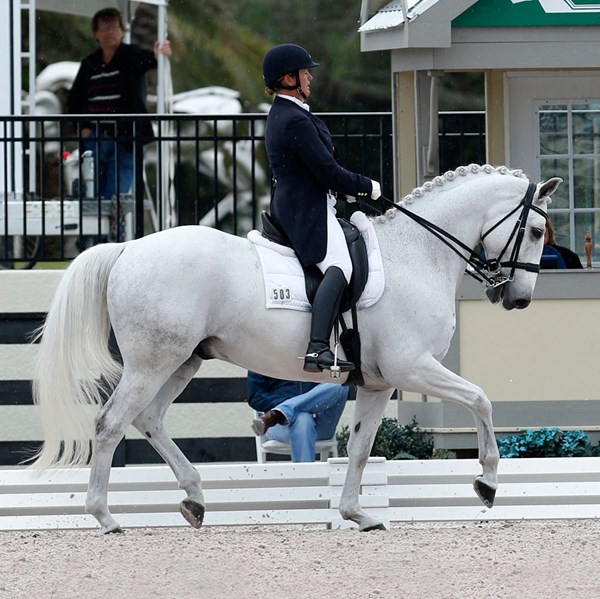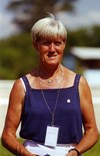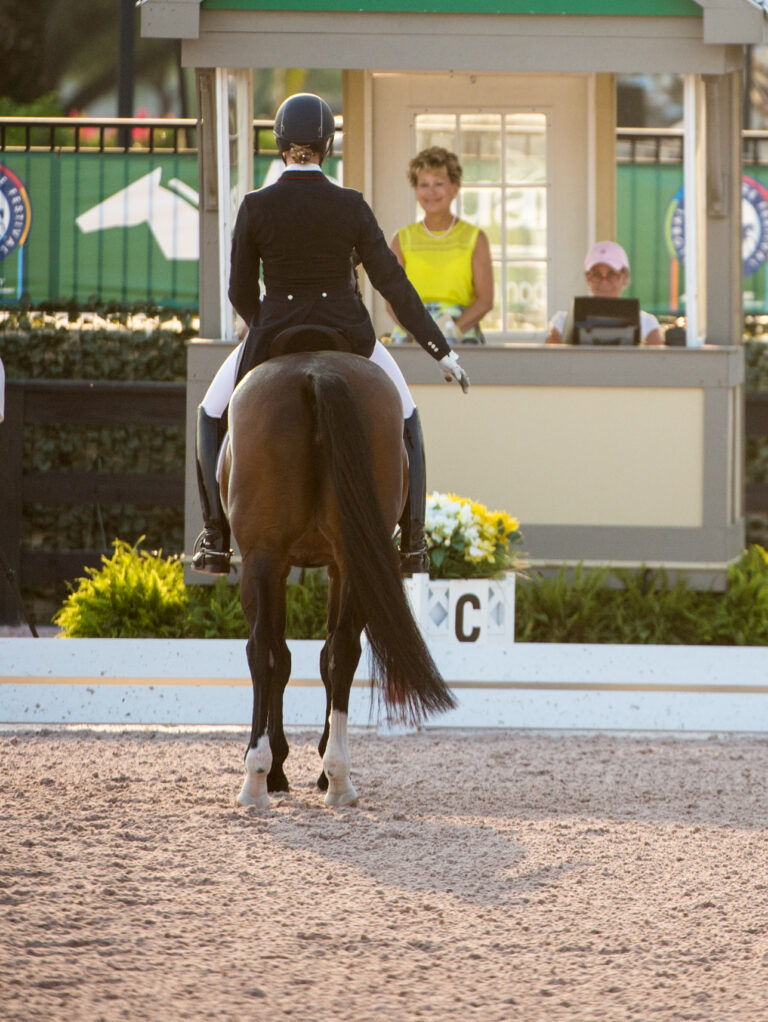My recognition as a Fédération Equestre Internationale (FEI) 5* dressage judge, the highest rank given to international judges, is proof that one can achieve this status by being fair, honest and a good colleague. Our sport has grown tremendously since my judging career started in 1974 and so have the expectations of all of those who participate.

I have always felt, and still do after nearly four decades of judging, that it is an honor when show management calls and asks me to officiate an event. It is an honor to step into the judge’s box, and I have always tried to be respectful of the riders who put their trust in me as a judge. Horses and riders are a judge’s responsibility, and we should not take it lightly. We know how important it is to be fair and honest.
This recognition has shown me that being a good judge has its rewards and is acknowledged. I am truly honored. I am amazed how many judge friends I have, and I will try to do them and this promotion justice. Through all my years as a judge, I remained true to myself and believed in who I wanted to be—straightforward, nonjudgmental, humble and not too proud to accept the educational help from more-experienced judges when I needed it. I have also tried, and hopefully succeeded, at being easy to work with and not difficult for show management. I have tried not to come across like I am more important than any other person who makes shows a success, be it a scribe, runner, office help, etc.
Since I first started judging, the quality of the horses and riders has changed tremendously. Now, more than ever, judges in this decade have the possibility to give scores within the whole scoring range (0 to 10). I have had the chance to give 10s a few times, and what a thrill it is. Scary, but a thrill. It is the ultimate score and not lightly given. It can make the placing of the class, and one wants to be absolutely certain it is deserved. But the rider should receive it if one sees only expertise and excellence. That 10 is deserved if I can’t think of anything else I want to see more of. If a judge sees a movement in a test which gives him or her goose bumps, then they should give their 10.
The sport has grown all over the world and is allowing me to travel to many amazing places across the globe. We see mostly the airports, hotels and showgrounds, but once in a while the countryside, too. I’ve met amazing people, and while we all speak different languages, our dressage language is pretty much the same.
Shows are now televised. Everyone can see results as soon as the scores are in via Facebook and other social media connections. This means the media is watching our judging, our behavior, our confidence or otherwise. It isn’t always easy to be in that judge’s box, especially for the judges who have been responsible for some of the most important events in the world. The media has knowledge about this sport, and is definitely not always easy on the judges. The spectators also have more knowledge nowadays.
As a judge climbs the ladder of status there are obligations we have to accept. It isn’t enough to judge the show. It is also our responsibility to educate as much as possible the riders—the younger generation, amateurs and professionals alike. We also need to educate the owners of the horses and the spectators if need be. Our judging is responsible for how riders will present the horses in the dressage arena. The quality of horses and riders is so exceptional, but we must be careful not to forget the correct training of these amazing horses. Our numbers and comments are what these riders pay attention to. We better make sure that we are still rewarding the classical training of horse and rider.
Trainers, teachers and judges must believe in the same Training Scale, and it is very important that we all share the same beliefs—that the correct training of amazing horses with unbelievable talent must be given first priority. Following the Training Scale should create trust and confidence, therefore also harmony and a partnership between these lovely horses and expert riders. The powerful horses we see are not as easy to ride as it seems. The truly best Grand Prix horses are the most sensitive ones and have amazing forward inclination. To channel that energy needs a secure, sensitive and expert rider to make this horse feel controlled but still allowing its athletic expression. Most judges have been riders, trainers/teachers and know how much it takes to make a Grand Prix horse. When we see a correctly trained horse and rider team it is very much appreciated.
Today we have amazing judge programs to help our judges be the best they can be. That means we older/more mature judges must be willing to help with these educational programs. We must be willing to be mentors to the new upcoming judges so that they can climb the ladder of education and status. We need them for the future. We should never make these learning judges feel that they can’t ask for help. We must remember our beginning—we all started at the bottom and had to learn to be who we are now. It takes years of judging, experience gained by judging and the willingness to share one’s experience to give us the judges we would like to have of the future. Our judge’s status brings with it these responsibilities which we should be willing to accept

Lilo Fore is a Fédération Equestre Internationale (FEI) 5* judge. She has been a member of the ground jury for numerous U.S. Equestrian Team selection trials, the Pan American Games, the World Equestrian Games and the Olympic Games. She is also an FEI “C” judge for Para-Equestrian and a U.S. Equestrian Federation (USEF) “R” judge for sport horse. She was a founding member of the U.S. Dressage Federation (USDF) Instructor Certification Program and is currently an examiner and the chair of the program. She has chaired or been a member of numerous committees for USDF and USEF and is a successful rider, trainer and coach. She owns and operates Sporthorse America, a dressage training facility located in Santa Rosa, California.











